
The birth of a banknote occurred in the 18th century
Defined by a nation and driven by commerce, a banknote — a promissory note issued by a bank and payable to the bearer on demand — is many things. For the longest time in history, the idea of money was transactional, pivoting from barter systems to commodity exchange such as grain, metal and metal coins, and a form of paper money in early Chinese history.
The birth of a banknote, and money as we know it now, occurred only in the 18th century. Today, banknotes are so ubiquitous that few realise it is a fairly recent phenomenon. And that they come with a lot of history. “India’s paper money tells a story like no other,” explains Rezwan Razack, 70, a prolific banknote collector of over six decades and one of the country’s leading scholars of paper money. In May, he was felicitated by the International Bank Note Society (IBNS) and inducted into their Hall of Fame; he is the first Asian and Indian to receive this rare honour. “It’s a sweeping saga of empires rising and falling, of republics being forged, of majestic monarchs, and the quiet strength of Mahatma Gandhi, of the hard-won fight for Independence and the relentless spirit of innovation. To be a custodian of this legacy is a privilege.”
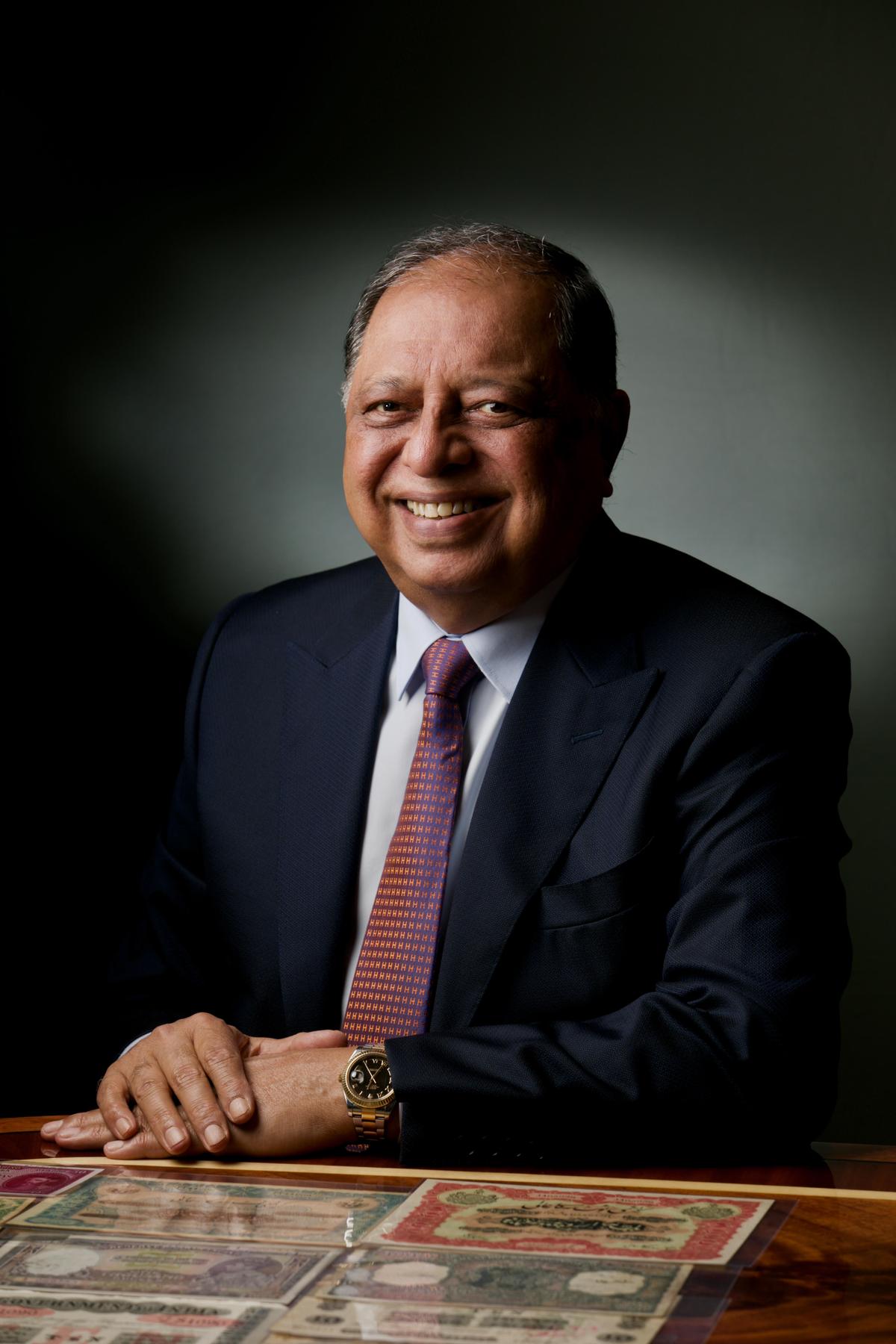
Rezwan Razack
Razack’s collection has been recognised by IBNS as the most comprehensive collection of Indian paper money in the world, “comprising one note of each variety of Paper Money pertaining to India since inception to the present”. According to the Bengaluru-based collector, this recognition is the culmination of a lifelong obsession. “What began as wide-eyed wonder as a child — a fascination for the vibrant colours, intricate design and whispered stories hidden within these thin sheets of paper — became a passion for life,” he shares. “Banknotes are canvases of history and portraits of different times.”
With a slew of authored books and a glittering public museum — Rezwan Razack Museum of Indian Paper Money — his journey of preservation and documentation is an ongoing one. And as India celebrates its 79th Independence Day, his work gives us a chance to go back to where it all started.
₹500 ‘Oriental Bank’, 1840s
The earliest banknotes were issued by private banks. The Oriental Bank Corporation was founded in Bombay and the vignette shows the Town Hall, today called the Asiatic Society of Mumbai Town Hall. In the early days, money was still printed in London.

₹10, Banque de l’Indochine, 1910
Poseidon, Greek god of the sea, sits holding a trident on two sea snakes in this striking blue note of the Bank of Indochina established to promote French mercantile interests. French colonial ambitions in India were throttled early, but they continued in French Pondicherry. Notice the mix of French, English, Tamil, Telugu, Malayalam and Urdu languages in this ‘Specimen’ note.
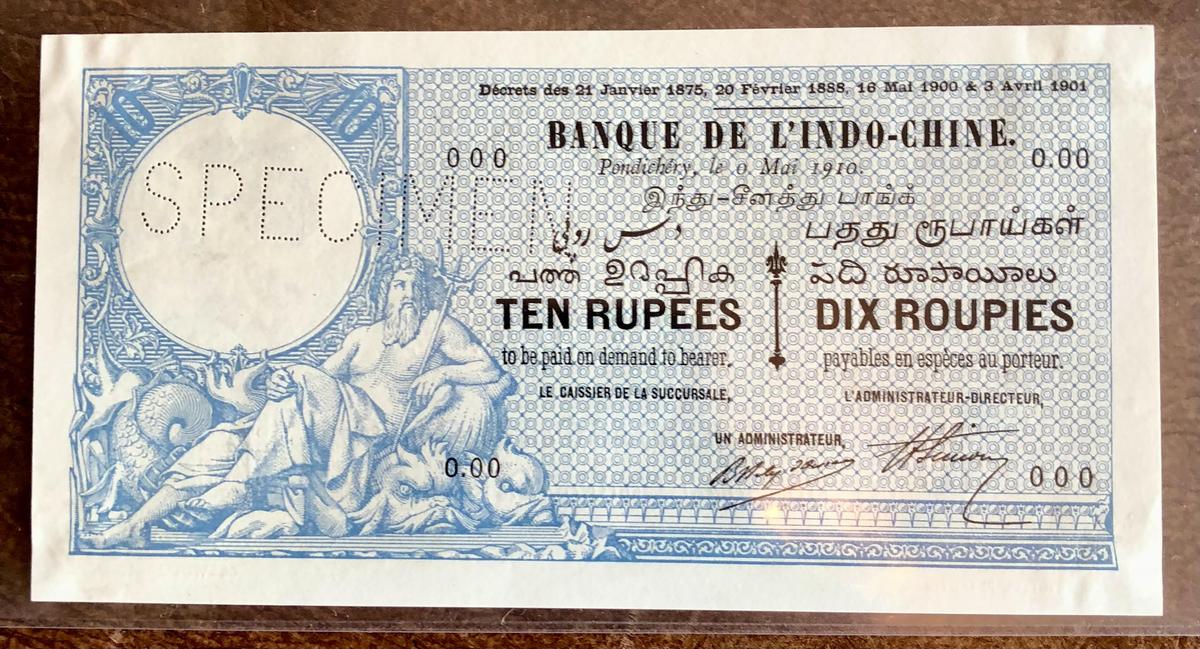
₹1,000 ‘Uniface Note’, 1918
Banknotes have always had to keep ahead of ingenious forgers. In this early version for the government of India, the serial number 89697 had to be repeated four times as a security measure.
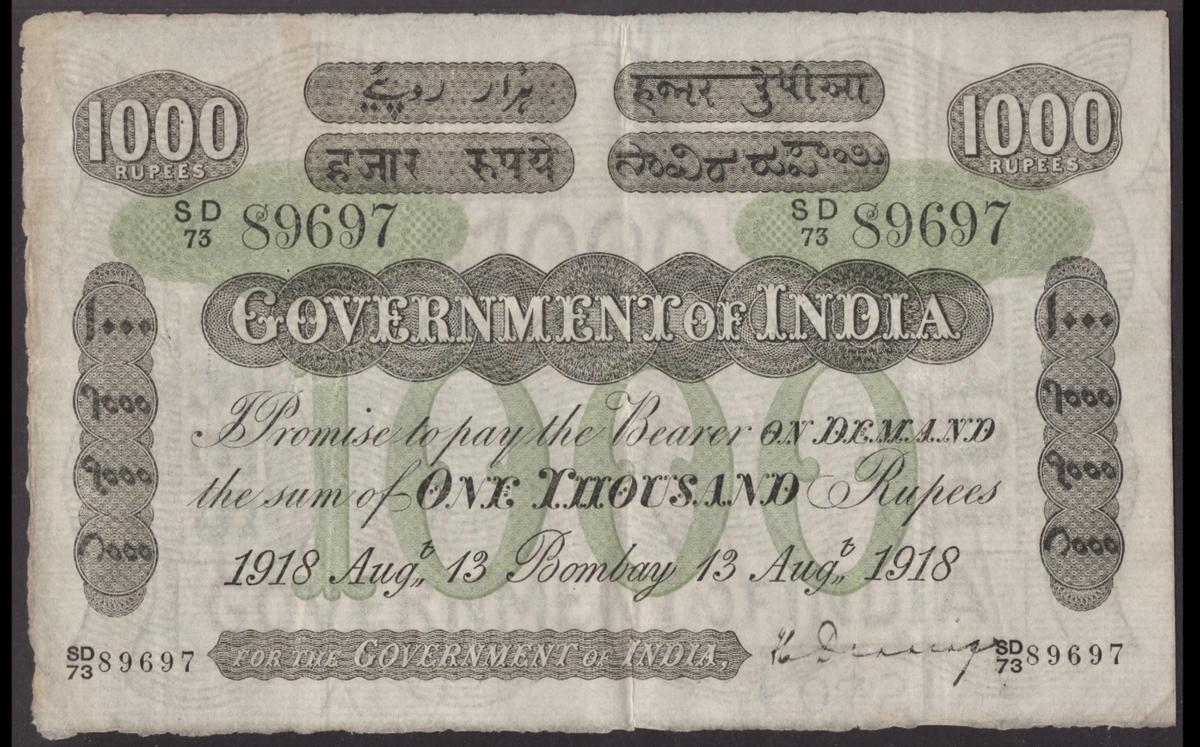
₹5, Hyderabad State, 1919
Only the Princely State of Hyderabad in British India was given the privilege of printing their own currency. The Osmania banknotes, some of the most beautiful notes produced anywhere, were created during the reign of the Nizam of Hyderabad VII, Mir Osman Ali Khan.
₹100, ‘King George V’, 1927
The portrait of the monarch appears on the banknote from 1917 onwards. The ‘Lahore’ on this note indicates the circle of issue and the sophisticated purple and green print, with its complexities, was a precursor to the intricate design one finds in banknotes today.
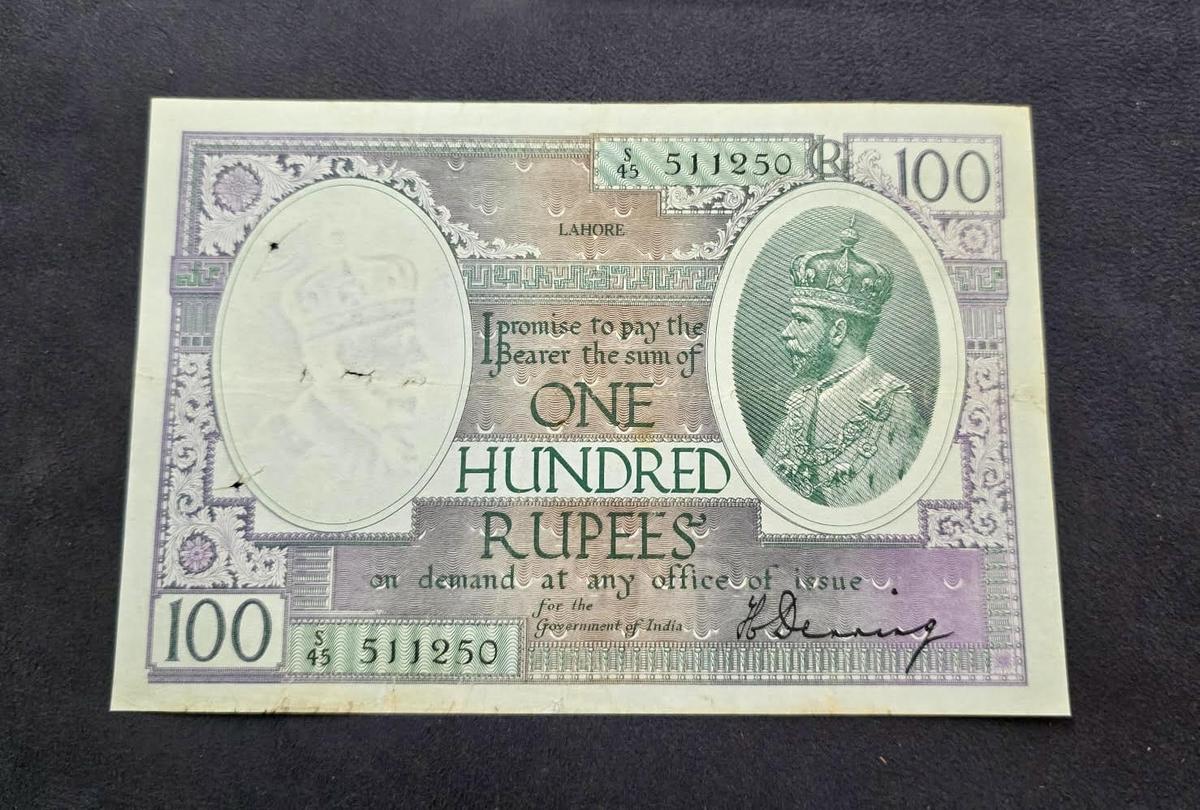
₹5 ‘Cinco Rupias’, 1945
Issued by the Banco Nacional Ultramarino or the National Overseas Bank, at the brink of India’s Independence, this note was used in the Portuguese colony of Goa. Notice the denomination in Rupia, later changed to Escudos, and the use of Urdu, Marathi, Kannada and Hindi.
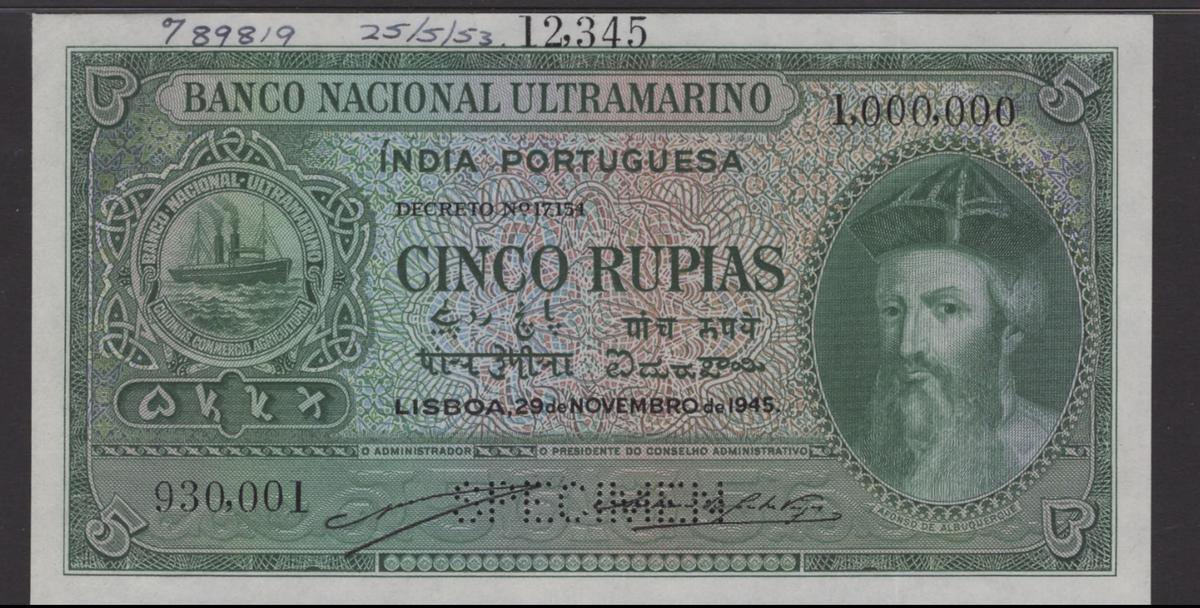
₹100 Haj Note, Saudi Arabia, 1959
This extremely rare, beautiful banknote in striking red was issued when the Indian Hajj Committee Act was created in 1959 for pilgrimage to Mecca. Although Haj notes were issued after India’s independence, a bearer could exchange it for riyals locally and it facilitated the holy pilgrimage immensely. Later withdrawn, such notes were exchanged against money.
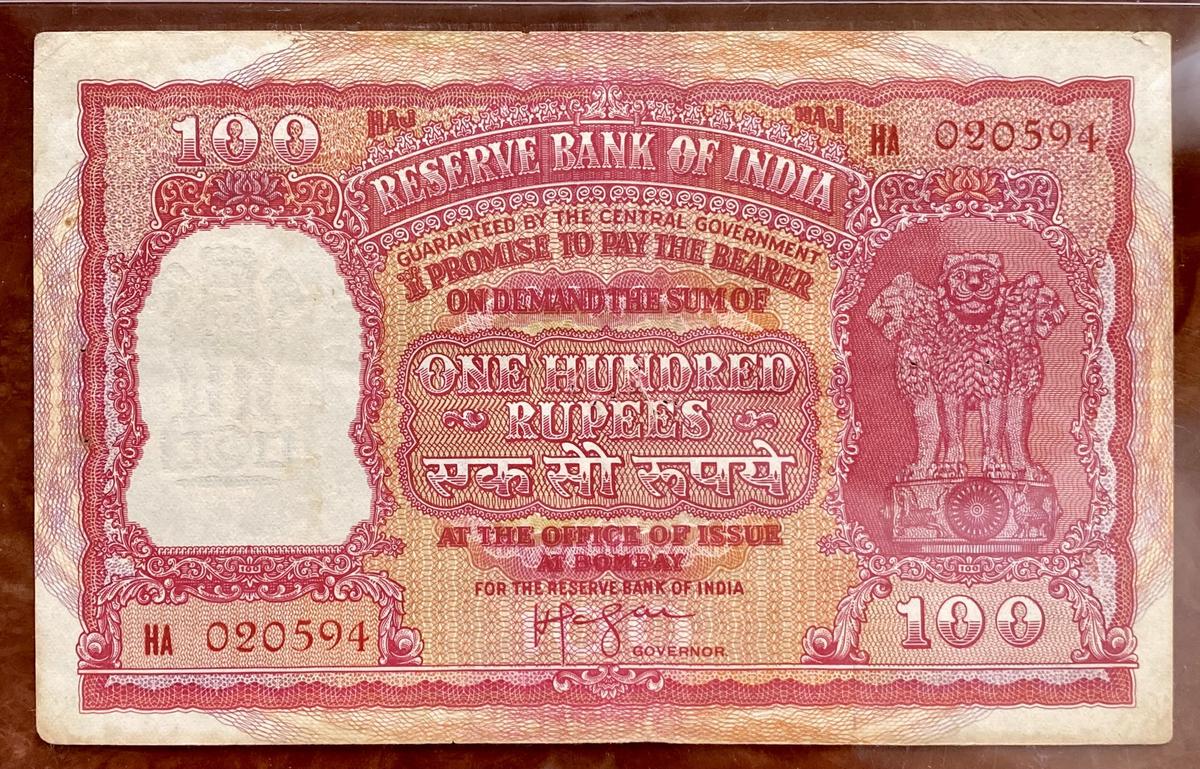
2 annas, Prisoners of War currency
As World War II raged, prisoners of war were brought to camps scattered across India. This is a rare example of a coupon given to prisoners that they could use as currency. Printed on only one side and issued in annas and rupees, this one was used for the Japanese prisoners captured in Burma and held in a Delhi camp.
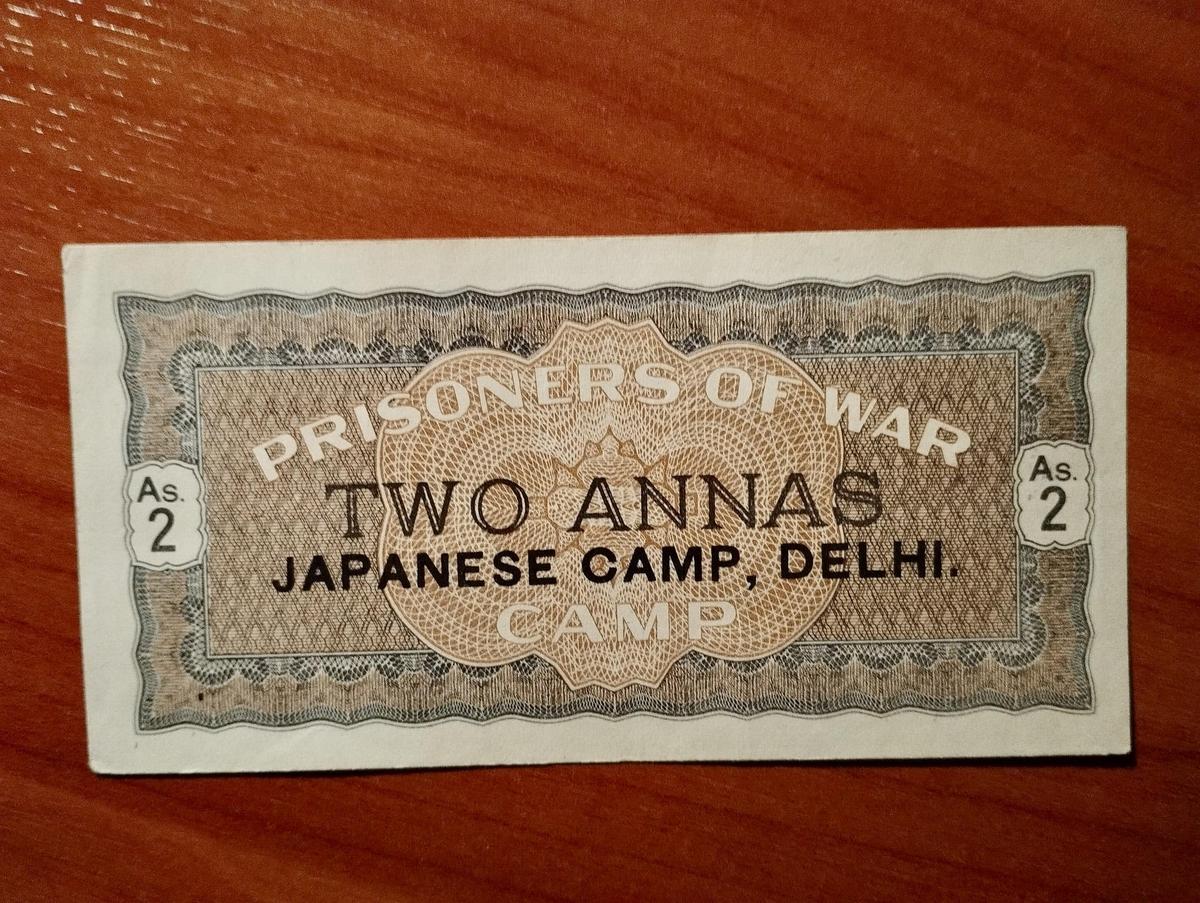
The writer is the founder-director of Eka Archiving Services.
Published – August 15, 2025 06:06 am IST